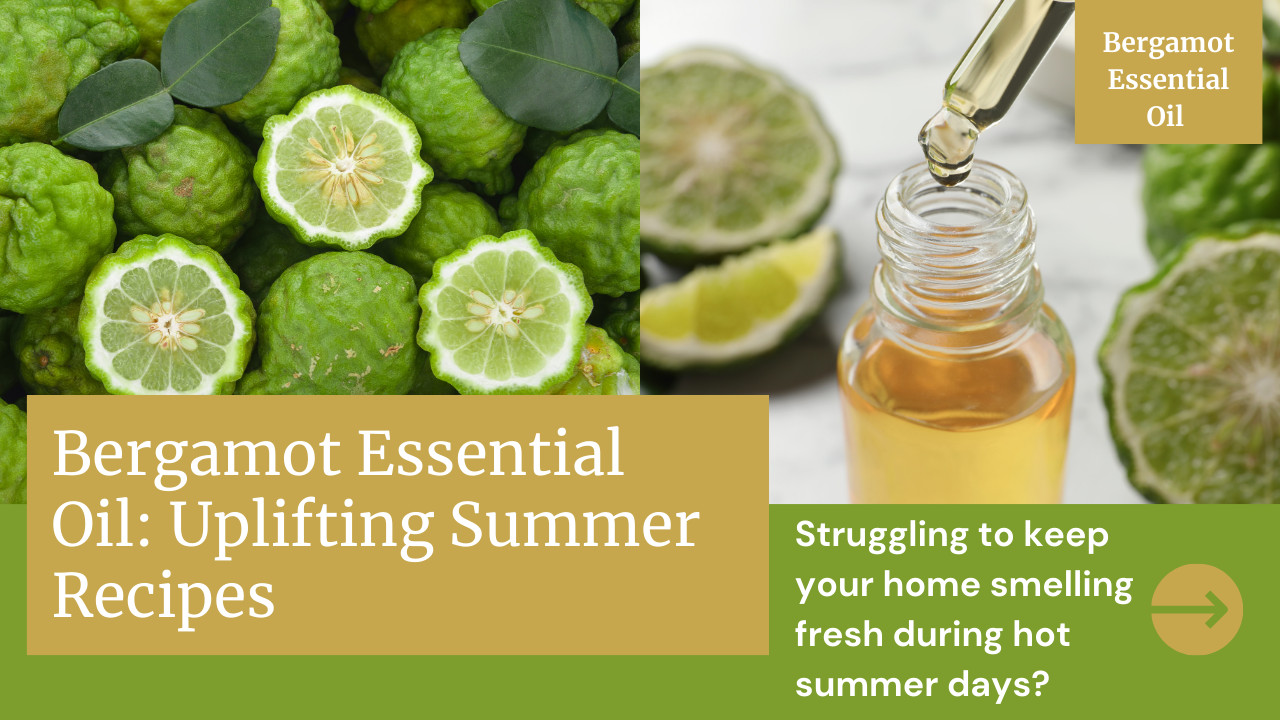
Summer is here, and where I live, it often gets over 105 degrees. With a multiple dog household, closing up the house to keep cool can make it harder to keep things smelling fresh. That's why I diffuse essential oils even more frequently during these hot months. Summer has such a fresh, happy vibe, full of energy, and I love capturing that feeling indoors with the right essential oils. One of my favorites for this purpose is bergamot. Its bright, citrusy scent is perfect for freshening up the house and creating a cheerful atmosphere while also being very relaxing. Let’s explore bergamot essential oil and the summer oils it pairs well with to bring a breath of fresh air into your home.
Understanding Bergamot Essential Oil
Bergamot essential oil is derived from the rind of the bergamot orange fruit, Citrus bergamia, native to Italy. The citrus fruit is actually considered inedible due to its sour taste and bitterness, but the zest and juice are sometimes used in recipes, and the rind can be candied and made into marmalades. Bergamot is most famous for flavoring Earl Grey tea.
If I need a cup of tea but am out of Earl Grey, I simply add a bit of honey, use the toothpick method to swirl in some bergamot, and steep my tea bag in hot water. Easy peasy and dare I say a bit better than store-bought. If you're interested in essential oils in food, check out my handout HERE.
The essential oil is commonly produced through cold pressing the rind of the bergamot fruit, resulting in an oil rich in linalyl acetate and other beneficial compounds. Popular in aromatherapy and used for centuries in Italian folk medicine, bergamot oil and its compounds have been studied for antioxidant properties which may help to support the immune system.
Linalyl acetate has been studied and research suggests it may have antimicrobial effects, making it potentially useful for formulations aimed at cleansing and purifying the skin and air. Additionally, it has been studied for anti-inflammatory benefits, which could help soothe irritated skin and reduce inflammation in topical applications.
In Italian folk medicine, bergamot was used to treat fevers and infections and aid digestion. Its citrusy aroma was believed to uplift spirits and promote well-being. Today, these historical uses influence modern aromatherapy and herbal medicine practices, showcasing bergamot's enduring popularity and versatility in holistic health approaches.
Let's dive into how bergamot essential oil can enrich your daily routine, especially through diffusion alongside other summer oils. Bergamot brings a bright, citrusy zest to your home, creating a fresh and uplifting atmosphere that embodies the essence of summer. Discover how these oils synergize to craft the perfect ambiance for your summer days.
When I think of summer essential oils, I think of citrus oils. They bring bright aromas and fresh energy that's perfect for the season. Let's explore some of my favorite summer essential oils that pair wonderfully with bergamot:
- Lemon: Known for its refreshing and uplifting scent, lemon essential oil is great for boosting your mood and energy levels. It's also fantastic for cleaning and unpleasant odors.
- Lime: This oil has a sweet, tangy aroma that is both invigorating and refreshing, making it a perfect companion for hot summer days.
- Orange: Orange oil is known as sunshine in a bottle—just smelling it can make you happy.
- Tangerine: With a sweet aroma similar to orange, tangerine oil also promotes happiness and can enhance your mood after long day.
- Grapefruit: Grapefruit essential oil has a sharp, tangy aroma that is invigorating and energizing, perfect for an afternoon pick-me-up.
In addition to these citrus oils, here are some other wonderful essential oils for summer:
- Patchouli: With its rich, earthy scent, patchouli essential oil is grounding and balancing, adding depth to lighter citrus blends.
- Basil: Known for its warm, spicy aroma, basil oil is great for reducing feelings of tension and promoting mental alertness.
- Spearmint: Lighter and sweeter than peppermint, spearmint oil is refreshing and invigorating, perfect for cooling down on hot days.
- Peppermint: This oil has a strong, minty aroma that is both cooling and invigorating, helping to keep you refreshed during the summer heat.
- Citronella: Studied for its insect-repelling properties, citronella oil is a must-have for outdoor summer activities.
- Kunzea: With its fresh, clean scent, kunzea oil is great for soothing tired muscles and relieving discomfort.
- Jasmine: Jasmine oil has a rich, floral aroma that is deeply relaxing and uplifting, perfect for summer evenings.
- Lavender: One of the most popular essential oils, lavender oil is a top choice for calming and is popular in summer food recipes.
- Lemongrass: Known for its fresh, lemony scent, lemongrass oil is invigorating and purifying, making it great for cleansing the air.
- Ylang Ylang: With its sweet, floral scent, ylang ylang oil is soothing and relaxing, helping to reduce tension and promote a sense of well-being.
- Vetiver: Has a deep, smoky, and earthy aroma that is both grounding and calming. It complements citrus and floral oils well, adding complexity to a blend.
- Sandalwood: Provides a rich, warm, and creamy base note that has a soothing effect and blends beautifully with floral and citrus oils. Perfect for a warm summer night.
When creating essential oil recipes, understanding the concept of top, middle, and base notes can elevate your aromatherapy game. Each note plays a role in creating a balanced blend. However, feel free to simply diffuse bergamot or another oil from the list. Customize aromatherapy to what you like and what works for you!
Top notes: These are the first scents you notice in a blend, typically light and refreshing. They provide the initial aroma and evaporate quickly. Examples include citrus oils like lemon, lime, and bergamot.
Middle notes: Also known as heart notes, these oils form the core of the blend. They emerge after the top notes and help to balance the aroma. Examples include floral oils like jasmine and ylang-ylang.
Base notes: These oils are rich, deep, and grounding. They provide stability to the blend and their aroma lingers the longest. Examples include earthy oils like patchouli and vetiver.
Bergamot Diffuser Recipes
1. Summer Bouquet- Perfect for date night!
- Top Note: 3 drops Bergamot
- Middle Note: 2 drops Jasmine
- Base Note: 1 drop Patchouli
2. Summer Focus- Works well for a calm and focused mind.
- Top Note: 3 drops Bergamot
- Middle Note: 2 drops Basil
- Base Note: 1 drop Vetiver
3. Citrus Mint Fusion- A go-to afternoon pick me up!
- Top Note: 3 drops Bergamot
- Middle Note: 2 drops Peppermint
- Base Note: 1 drop Lemon
4. Tropical Citrus Oasis-Turn this essential oil blend into a perfume-Wowza!
- Top Note: 3 drops Bergamot
- Middle Note: 2 drops Ylang-Ylang
- Base Note: 1 drop Sandalwood
5. Citrus Calm- This recipe works well to help relax and calm nervous dogs! I'll often diffuse it in the afternoon, in preparation for summer thunderstorms.
- Top Note: 3 drops Bergamot
- Middle Note: 2 drops Lavender
- Base Note: 1 drop Vetiver
These blends harness the uplifting and citrusy qualities of bergamot oil while balancing them with complementary floral, herbal, and woody notes to create complex and delightful aromas. Adjust the drops of essential oils according to your preference and enjoy experimenting with different combinations to find your perfect summer scent.
Aromatherapy Inhalers: Convenient Aromatherapy On-the-Go
Aromatherapy inhalers are compact and portable devices designed for easy inhalation of essential oils. These inhalers typically consist of a small tube with a wick inside that absorbs essential oils. They are widely available on platforms like Amazon, providing a simple and discreet way to experience the benefits of aromatherapy throughout your day. Whether you prefer a simple Bergamot inhaler or want to try these two refreshing blends, creating your own aromatherapy inhaler is quick and straightforward.
Recipe 1: Bergamot Relaxation Blend
Ingredients:
- 5 drops of bergamot essential oil
- 3 drops of clary sage essential oil
- 2 drops of geranium essential oil
- Aromatherapy inhaler
Instructions:
- Add the drops of essential oil to the inhaler wick.
- Insert the wick into the inhaler and close it securely.
- Inhale deeply whenever you need to relax and uplift your mood.
Recipe 2: Bergamot Boost
Ingredients:
- 5 drops of bergamot essential oil
- 5 drops of peppermint essential oil
- Aromatherapy inhaler
Instructions:
- Add the bergamot and peppermint essential oil to the inhaler wick.
- Insert the wick into the inhaler and close it securely.
- Inhale deeply as needed for a quick boost of positive energy.
I love to use these inhalers when I travel as you can pop them out on a plane and get some good whiffs in without fear of overwhelming your neighbor!
Topical Use Bergamot Essential Oil
Topical application of Bergamot Essential Oil offers another refreshing way to harness its benefits. You can easily turn any of the diffuser blends into a roller bottle by tripling the recipe, adding it to a 10 ml roller bottle and filling it up with a carrier. For me step by step handout on making a roller bottle, click HERE.
It's important to remember, however, that bergamot, like other citrus oils, has phototoxic properties, which means it can increase skin sensitivity to sunlight. To enjoy Bergamot safely, consider applying it in the evening or on areas of skin covered by clothing.
Also best practice is to dilute essential oils before applying with a carrier oil. A carrier oil is simply a fatty oil used to 'carry' the essential oil. Fractionated coconut oil is my favorite oil because its light, non greasy and absorbs quickly. Jojoba oil works well and you can even use olive oil. Sweet almond oil is another popular choice. Diluting essential oils helps to minimize any potential skin irritation, plus since essential oils are so concentrated and oftentimes you only need a drop, diluting gives us best results by covering a large area with a minimal amount of essential oil.
Unfortunately, not all essential oils are created equally. The industry has minimal regulation, and adulterated oils are common. To ensure I'm purchasing pure essential oils of the highest quality, I trust oils sourced from suppliers and farms I've personally visited, where transparency from farm to bottle ensures purity and safety. If you're looking for oils you can trust, I invite you to explore the company I rely on. I've visited many of their farms, helped plant, harvested, and even bottled my own oil. Click HERE to check them out using my affiliate link at no cost to you. Thanks for supporting my small business!
Incorporating bergamot essential oil into your summer routine is a great way to transform your home into a calm and refreshing oasis, banishing any lingering pet odors and filling your space with an uplifting aroma. Whether you're diffusing it to keep your house smelling fresh or enjoying its benefits on the go with aromatherapy inhalers, bergamot pairs beautifully with other summer oils to create a delightful ambiance. Ready to elevate your summer vibes and maintain a welcoming home environment? Grab your bottle by clicking HERE and immerse yourself in the essence of summer!
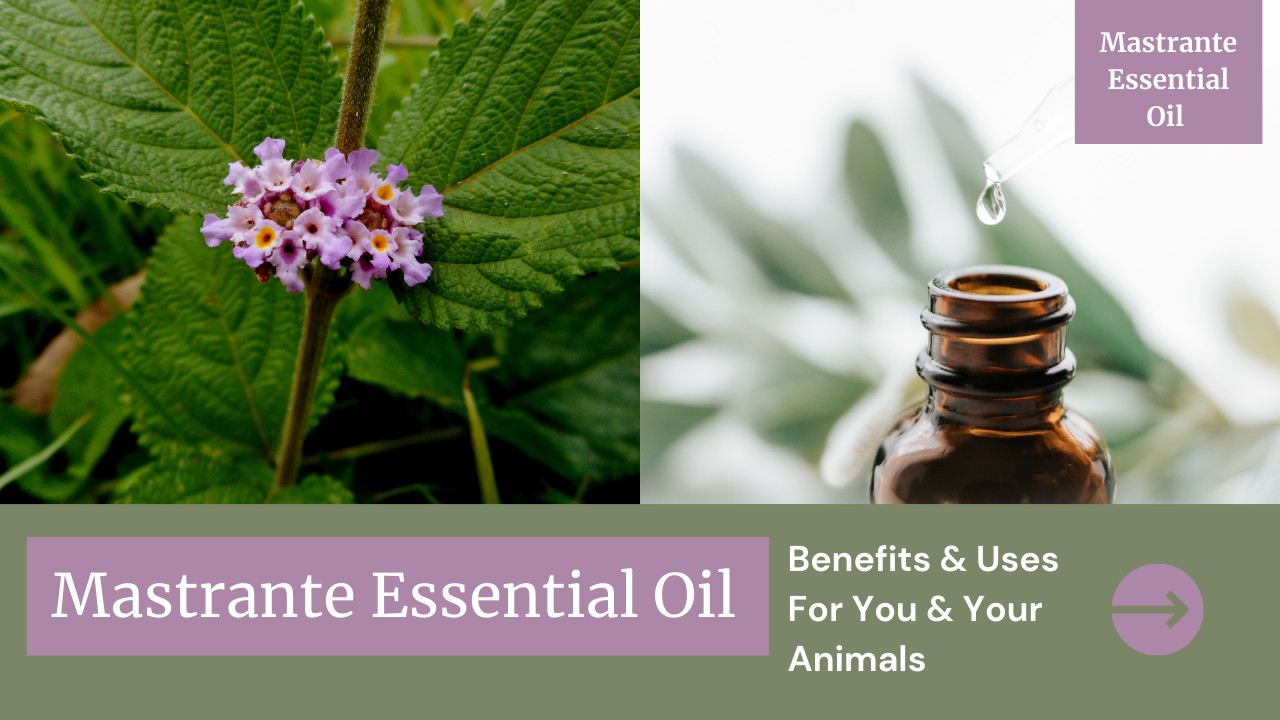
As an essential oil enthusiast, I'm always looking for new, versatile, and beneficial essential oils to add to my collection. I decided to give Mastrante essential oil a try, and it quickly became a favorite essential oil that I use for myself and my horses and dogs! Let me share with you why Mastrante has earned a permanent place in my wellness routine and how it can benefit you and your animal companions!
Quick Recap on Essential Oils
Essential oils are concentrated plant extracts that capture the natural scent and beneficial properties of their source. The help protect the plant and support vital functions of the plant. Unfortunately when it comes to quality, not all essential oils are created equal.
The Food and Drug Administration (FDA) does regulate essential oils, but there are loopholes that can affect the purity and efficacy of the products on the market. That's why it's crucial to thoroughly vet the companies you purchase from.
I personally recommend my go-to company, which I trust for their transparent Seed to Seal™ process. I've had the privilege of visiting their farms, helping with planting, and even participating in the distillation process. This hands-on experience reassures me that I'm getting the purest essential oils available. This level of purity is one of my top safety factors, especially when using essential oils with my horses and dogs.
For pure, high-quality essential oils that you can trust, check out my recommended company HERE. Their commitment to excellence ensures that you and your pets receive only the best.
The Historical Background of Mastrante Essential Oil
Native Origins
Mastrante, also known as bushy lippia or Lippia alba, is a member of the Verbenaceae family. It is native to South and Central America, however it grows abundantly in regions with warm climates such as southern Texas. The plant is a woody, aromatic shrub with pretty purple flowers and is highly valued for its wellness properties.
Traditional Uses
The indigenous people of South and Central America have utilized the leaves of this aromatic plant for centuries. Traditionally, the leaves were used to make infusions and teas believed to aid in digestion, alleviate respiratory issues, and reduce fevers.
Culinary and Cultural Significance
Mastrante has also found a place in traditional cuisine. In Mexico, for example, the leaves are sometimes used in the preparation of molé sauces, imparting a unique herbaceous and slightly sweet flavor. This culinary use highlights the plant's versatility and cultural significance in the region.
Now, let's explore the aromatic affect of Mastrante essential oil.
Mastrante essential oil boasts a unique, herbaceous aroma with a delicate note of sweetness and an earthy undertone. I find this aroma very relaxing and several of my horses really gravitate towards this oil. I find it to be very balancing and grounding and have used it to take the edge off during stressful situations like trailering or vet visits.
Sometimes, I find that more flowery calming essential oils, like lavender, can occasionally seem to attract bees, but I haven't noticed that with Mastrante.
As a massage therapist, I'm also always concocting muscle rubs and I find Mastrante beneficial to help sooth tired muscles and discomfort. After an intense training session, I'll often make a brace for my horse and I've been adding Mastrante in addition to Peppermint essential oil.
I also find the earthy aroma and sweet aroma of Mastrante much more tolerable than tea tree essential oil, so I've been swapping Mastrante for tea tree in many of my hoof care recipes and skin support roller balls.
Interestingly enough, when I took out the bottle to try with my dogs, my hyper min pin, focused intently on the bottle and seemed to relax and focus a bit more on me. I decided to diffuse it while I work at my computer and I think it's one of the oils I'll start to reach for for focus and clarity!
Practical Uses
Three key constituents found in Mastrante—limonene, carvone, and germacrene D—have been studied for their antimicrobial activity. This study on PubMed.gov found all three compounds to possess antimicrobial activity, making Mastrante oil of considerable value for radiant-looking skin.
Using Mastrante essential oil in skincare recipes promotes healthy skin. Its soothing properties make it a fantastic addition to your daily skincare routine or a skin salve for your dog or hoof oil recipe for your horse. You could simply grab some olive oil from your pantry for a quick dilution. Alternatively, try adding a few drops to your favorite vegetable oil complex or moisturizer and apply it to the desired area.
To use Mastrante oil for a calming effect, try massaging it into the bottoms of your feet with a carrier oil. You could also focus on the vita flex points to enhance feelings of relaxation and support the body's energy centers.
One of my favorite personal uses for this oil is a relaxing foot rub before bed.This simple practice helps me wind down after a long day of physical activity at the barn. I also often blend this with Idaho balsam fir for even more help for tired feet.
Diffusing essential oils is an easy way to fill your home with a comforting atmosphere that can benefit you and your dogs. For my tips on safely diffusing essential oils at home with your dog, click HERE.
You could use simple diffusers like adding a few drops to a cotton ball or wooden clothespin and stashing in strategic areas at the barn like outside your horses stall or in the trailer. if you have electricity in your tackroom, take advantage of the aromatic effect of mastrante by diffusing it to get rid of sweaty leather smell or promote a peaceful environment.
In my quest to create a toxin-free household, I've discovered the benefits of incorporating Mastrante essential oil into my homemade cleaners and hand soap. Its properties make it a powerful addition to cleaning solutions, ensuring that my home is not only clean but also free from harmful chemicals. If you're interested in learning more about how to replace toxins in your home with natural cleaners, check out my blog for tips and recipes, HERE!
Spiritual Interpretation of Mastrante Essential Oil
Understanding that essential oils can have effects beyond the physical realm is what I like to call spiritual interpretation. When we smell an essential oil, it passes over olfactory receptors in the nose and travels to the limbic system of our brain, which is directly tied to our emotions. This is why inhaling an aroma can immediately evoke a memory or emotion. The spiritual interpretation of essential oils considers these effects on our emotional and spiritual well-being, offering a holistic approach to wellness.
Using essential oils in this way can directly benefit our horses and dogs by helping them with their emotions. However, what's even more significant is that our animals' emotions are directly tied to ours. Have you ever noticed how if you're having a bad day at the barn, your horse doesn't seem to want to cooperate either? Or if you're sad, you might find your dog feeling down as well? We are half the equation, and the first step in helping our animals have an improved emotional state is by ensuring we have one too.
Mastrante essential oil boasts properties that hold significant spiritual and emotional value for us and our animals:
- Grounding and Centering: We can use it to stabilize our emotions while at the barn so we can be calm and confident leaders for our horses. I also find this a good oil to diffuse during mediation or for a calm home vibe for the dogs.
- Enhancing Clarity and Focus: Mastrante's aroma helps foster focus and introspection, making it a good choice to inhale deeply before a training session or lesson. If you have a horse that has trouble focusing, let them inhale deeply as often as needed as well.
- Promoting Emotional Balance: Like us, horses an dogs can benefit from the emotional balance that Mastrante oil provides. This can be especially useful for animals that are easily stressed or tense, helping them feel more at ease and balanced.
- Supporting Energy Centers: A useful addition to therapies and modalities that balance energy centers.
- Creating a Sacred Space: Diffusing Mastrante oil can enhance spiritual rituals, prayer, meditation, and help create a relaxing home vibe. I find this super useful for a house full of barky chihuahuas-lol!
In conclusion, Mastrante essential oil is a versatile and beneficial addition to any essential oil enthusiast's collection. Its soothing properties make it a fantastic choice for skin care recipes, relaxation, and emotional balance.
For our animal companions, Mastrante can help support their emotions and overall well-being, reflecting the strong connection between human and animal emotions.
Whether you're using it for its practical benefits or its spiritual significance, Mastrante essential oil offers new tips and fun ways to enhance your well-being, creating a tranquil environment for you and your animals.
Visit this link to order your bottle of Mastrante essential oil and discover why it’s one of my top picks for creating a calm and healthy environment for you and your animals. By the way, this is an affiliate link, which helps support my passion for improving the lives of horses and dogs. Your purchase not only ensures you get the highest quality essential oil but also supports my mission. Once you've ordered send me an email to elissahambright@gmail.com, and I'll reach out with a thank you gift!
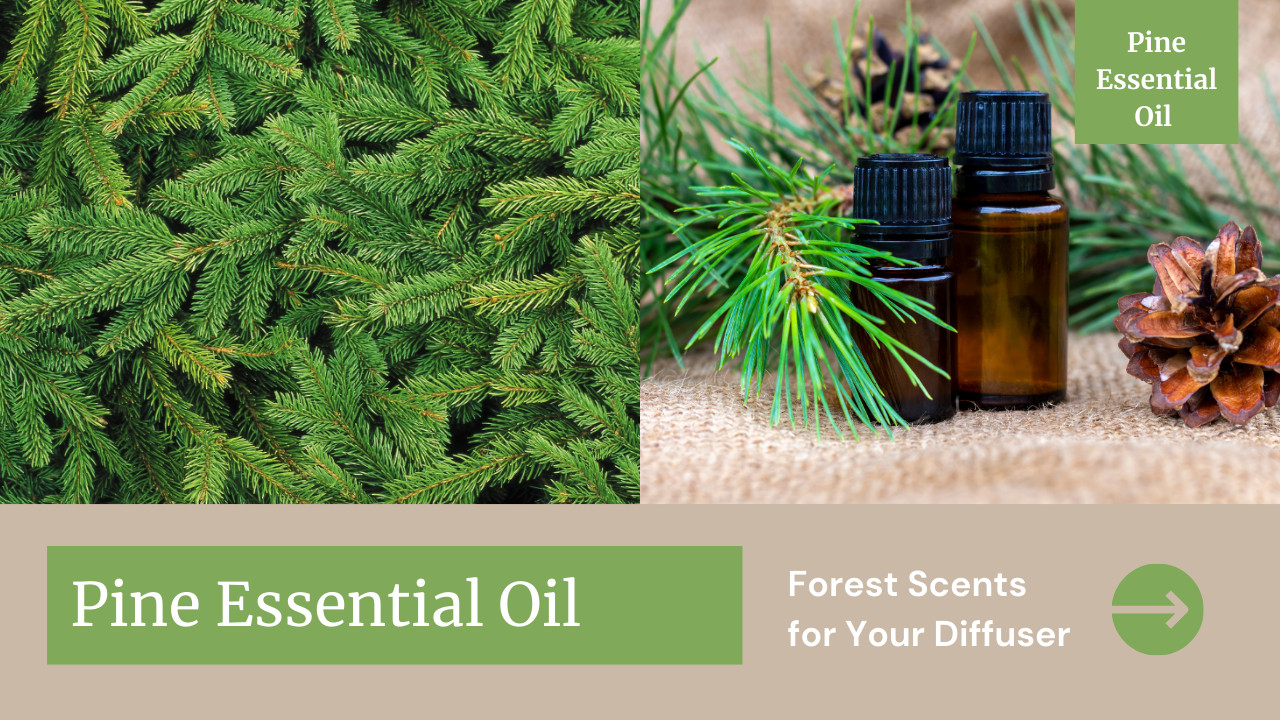
Discover the benefits of pine essential oil blends for aromatherapy and topical use. Explore forest fragrances and fresh diffuser blends for a natural remedy in your living spaces. Learn about the history of pine, its versatile uses, and how to incorporate it into your daily routine.
Read more...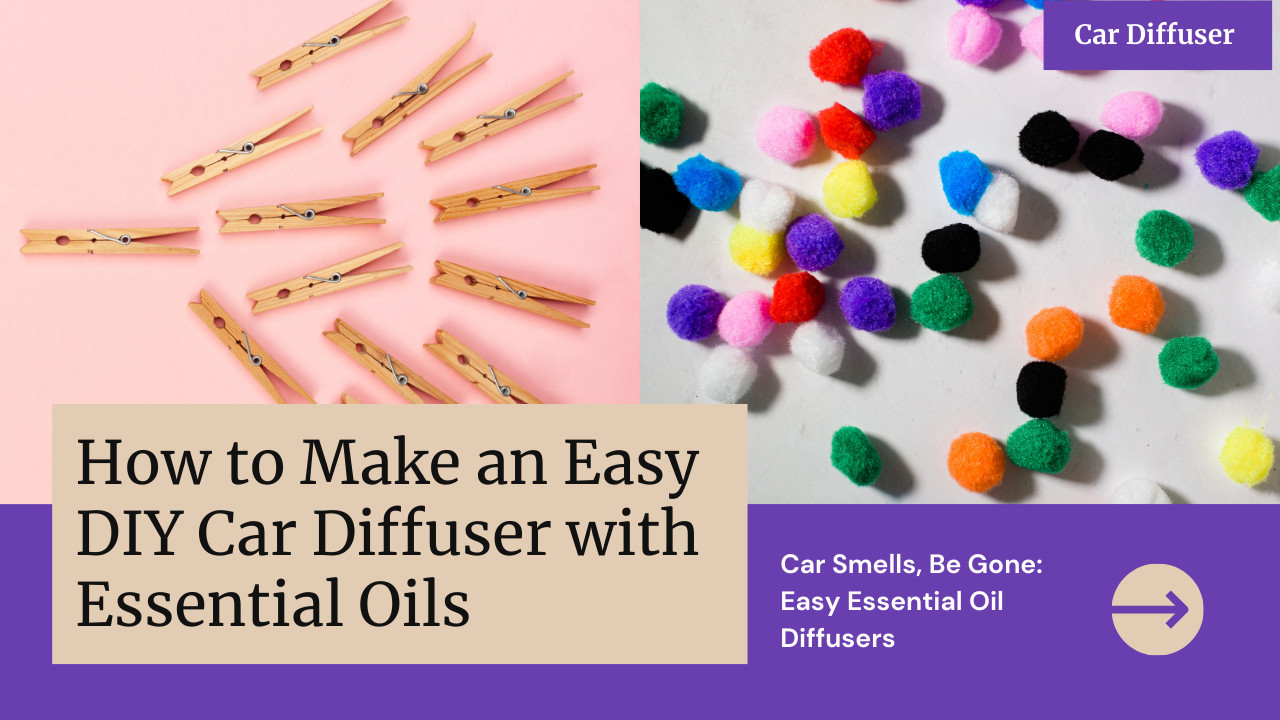
Tired of your car smelling like a barn or wet dog? Ditch those overpowering artificial air fresheners and discover how easy it is to make your own essential oil car diffusers. Keep your ride fresh and support your wellness on the go with these simple DIY solutions. Click to learn more and transform your driving experience!
Read more...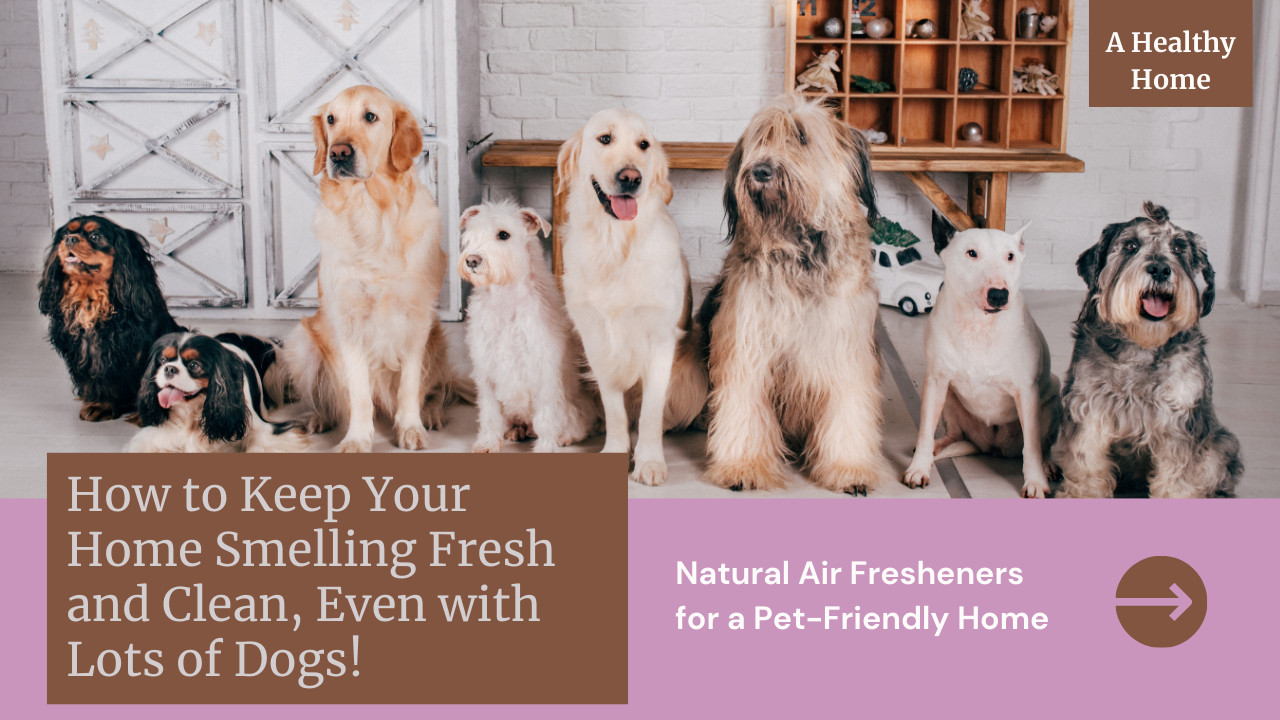
Natural Air Fresheners For A Pet Friendly Home
For the longest time, always having a large number of dogs, I thought it was inevitable that my house would, well, smell like dogs-haha! But did you know its possible to have a fresh and clean smelling house, even with lots of dogs? I also remember going to the mall and hitting up the candle stores and fragrance aisles, but after using these products, I would always get a headache, and that's when I started digging deep and reading my labels. Yikes! It's scary stuff that's on the market today, and one of the most common myths out there is, that if they sell it in stores, it must be ok. So what's a dog mom supposed to do?
Thankfully, I stumbled upon a natural remedy for making your house smell good that's safe for you and your fur kids. The best part is, not only do they make your house smell good, but they have additional wellness properties too! So what's my favorite way to make my house smell good?!...drum roll....I use essential oils for home fragrance!
Essential oils are nature's gift for a fresh-smelling and healthy home. Essential oils are highly concentrated extracts derived from plants. They capture the plant's natural aroma and contain beneficial properties that can enhance our well-being. Unlike synthetic fragrances, they are free from harmful chemicals and can actually benefit your health and the environment. And when it comes to pets, using high-quality, pure essential oils can be a safe and effective way to keep your home smelling fresh, without any negative side effects for you, or your companions.
And now that summer's here, we can also use essential oils to bring the scents of the season indoors. Imagine walking into your home and being greeted by the refreshing aroma of a tropical breeze, with notes of lime filling the air. Or perhaps you prefer the earthy scent of a forest after a summer rain, with hints of cedarwood and pine. Other summer-inspired blends could include the invigorating scent of a citrus orchard, the calming aroma of a lavender field, or the sweet fragrance of a summer garden in full bloom. With essential oils, the possibilities are endless, allowing you to create the perfect summer vibe right in your own home.
And yes, essential oils can be safe for your pets. The two most important safety factors are dilution and quality. You can read more about safely diffusing essential oils in your home by visiting my dedicated blog HERE, but let's touch on it briefly next.
FDA Regulation and Quality Control
Not all essential oils are created equal. It is both science and art that the plants that essential oils come from, are grown, harvested, and then processed for the essential oil. The time of day, age of plant, how it's harvested, and the distillation timeframe, all factor into the quality of the essential oil. Not all companies may take all of the steps necessary for pure and high-quality essential oils.
Essential oils fall under regulation from the FDA in the cosmetic or supplement category and the loopholes in regulation in the industry, such as trade secret laws, where the company does not have to disclose all ingredients on the label, means that some products may not be pure essential oils even though they are sold with the impression of being pure.
This is where greenwashing can also occur, where products are marketed as natural and safe when they may not be. So, what can you do? It's essential to find a company you can trust. Read your labels carefully and look for companies that are transparent about their sourcing and production processes. I invite you to check out my company HERE, where I've personally visited the farms and experienced their transparency firsthand.
Safe Use Of Essential Oils Around Pets
The best way to utilize essential oils as air fresheners is with an ultrasonic diffuser. An ultrasonic diffuser for essential oils works by dispersing the essential oil into a finely diluted mist after you add the essential oils to a water reservoir, helping to maintain their beneficial properties and fill the room with a pleasant aroma.
This dilutes the oil for safe use around pets. Just remember to always leave an out for your animal, like an open door, in case they don't appreciate the aroma as much as you. Birds are also very sensitive, so if birds are present in the home, consult a veterinarian trained in aromatherapy. Essential oils can still be used, but again quality, and then a smaller amount are key considerations.
There are other diffusers on the market, and you can check them out HERE, but the ultrasonic diffuser is my favorite for its ease of use.
Using Essential Oils Without a Diffuser
If you don't have a diffuser, don't worry! You can still enjoy the benefits of essential oils as air fresheners. You can add a few drops of oil to a cotton ball or a small cloth and place it in strategic areas, or use a clothespin to attach the cotton ball to a fan for a gentle diffusion.
Another method is to mix essential oils with distilled water in a spray bottle for a room or linen spray. Head to my blog HERE for more tips on using essential oils without a diffuser.
Six Essential Oils Perfect for Summer
As we look to infuse our homes with the scents of summer, certain essential oils stand out for their bright, uplifting aromas and potential wellness benefits. Here are eight pet friendly essential oils that are perfect for summer:
- Lemon: Known for its fresh, citrusy scent, lemon essential oil is energizing and uplifting. It can help create a clean, invigorating atmosphere in your home, reminiscent of a sunny summer day.
- Lavender: A classic essential oil known for its calming and relaxing properties, lavender is also a great choice for summer. Its soothing aroma can help promote a sense of tranquility, ideal for unwinding after a long day in the sun.
- Peppermint: With its refreshing, minty scent, peppermint essential oil is perfect for hot summer days. It can help cool the body and invigorate the mind, making it a great choice for creating a refreshing atmosphere in your home.
- Eucalyptus: Known for its clean, camphoraceous scent, eucalyptus essential oil is both refreshing and revitalizing. It can help clear the airways and promote easy breathing, making it ideal for summer discomfort.
- Orange: Another citrusy essential oil, orange oil has a sweet, uplifting aroma. It can help boost your mood and create a cheerful atmosphere in your home, perfect for summer gatherings or lazy days by the pool.
- Bergamot: With its bright, citrusy scent, bergamot essential oil is both uplifting and calming. It can help reduce feelings of stress and tension, making it a great choice for creating a relaxing summer retreat in your home.
- Citronella: Citronella essential oil has a fresh, lemony scent that is commonly associated with outdoor use for unwanted pests. Its uplifting aroma can also help create a bright and invigorating atmosphere indoors.
- Palmarosa: Palmarosa essential oil has a floral, rose-like scent with citrus undertones. It can help create a calming and balancing atmosphere, perfect for promoting relaxation during the summer months.
Simply pick an essential oil from the list above and follow the guidelines for your diffuser. Most diffusers work well with 6 drops, but feel free to adjust based on your preference. For a more complex aroma, consider creating essential oil blends for summer.
For example, combining lemon and peppermint not only gives you the happy vibe of lemon but also the refreshing, energetic pick-me-up from peppermint. So, pick a few oils and start experimenting, or try some of my favorite summer essential oil blends below:
- Citrus Splash: 2 drops lemon, 2 drops orange, 2 drops bergamot. - A refreshing and uplifting blend that will brighten your mood and invigorate your senses.
- Tropical Paradise: 2 drops lime, 1 drop citronella, 2 drops bergamot. - Transport yourself to a tropical island with this exotic and fruity blend.
- Minty Freshness: 2 drops peppermint, 2 drops eucalyptus, 2 drops lemon. - Clear your mind and refresh your senses with this cool and invigorating blend.
- Summer Breeze: 2 drops lavender, 2 drops orange, 2 drops bergamot. - Create a calming and peaceful atmosphere reminiscent of a summer evening breeze.
- Sunshine Bouquet: 2 drops lemon, 2 drops palmarosa, 2 drops orange. - Bring the sunny, uplifting scent of citrus into your home with this cheerful blend.
- Relaxing Retreat: 2 drops lavender, 2 drops bergamot, 2 drops palmarosa. - Unwind and de-stress with this soothing and calming blend.
- Citrus Mint Fusion: 2 drops lemon, 2 drops orange, 2 drops peppermint. - A refreshing and invigorating blend that will awaken your senses and boost your mood.
- Energizing Mix: 2 drops orange, 2 drops peppermint, 2 drops citronella. - Feel energized and refreshed with this uplifting and revitalizing blend.
It's also best practice to follow these general tips for a fresh home:
- Regularly clean and vacuum pet areas to reduce odors.
- Use baking soda to absorb odors in carpets and upholstery.
- Have good trash management. (Tip: Place a few drops of essential oil on a cotton ball and stash in the bottom of trash cans.)
- Identify and remove other sources of odor like mold or mildew.
- Consider having houseplants as they can help improve indoor air quality by absorbing pollutants and releasing oxygen. Some plants have a pleasing aroma as well.
- Sometimes your dog may need a bath—let's face it, it's part of pet ownership!
As we soak up the sun and enjoy the longer days of summer, why not bring a touch of the season into your home with the delightful scents of essential oils? Whether you're looking to create a refreshing and energizing atmosphere or a calming and peaceful retreat, there's a blend for every mood and occasion. Natural air fresheners for pet households is possible, and in fact with just a few drops of essential oil, you can transform your living space into a summer paradise, all while enjoying the natural benefits of these plant extracts. And the best part? You can safely make your house smell good without any unwanted side effects!
Ready to create a fresh home with essential oils and enjoy summer scents? Explore a bundle I put together of the high-quality essential oils mentioned in this blog, with a diffuser, to create your own summer oasis. Whether you're looking to energize your mornings or unwind after a long day, essential oils can enhance your home environment naturally. Visit my go to essential oil source HERE to learn more and start diffusing today! By the way, this is an affiliate link and I earn a small commission at no cost to you, thanks for supporting my small business!







